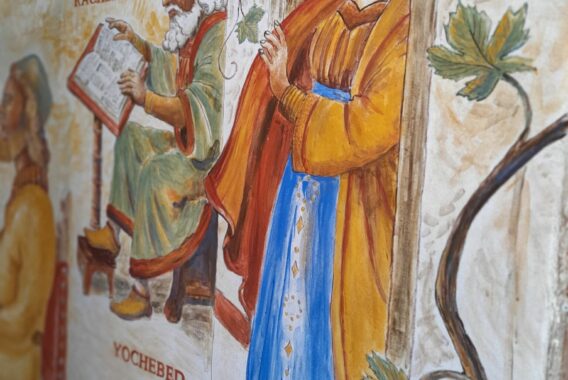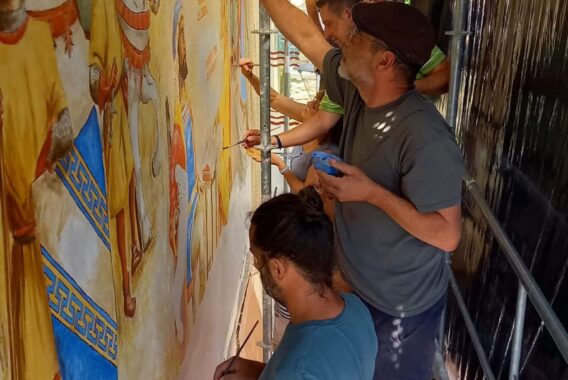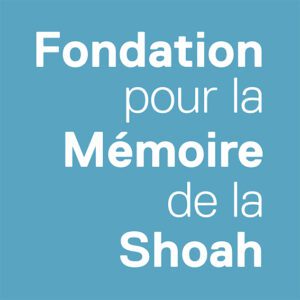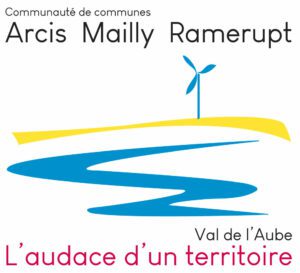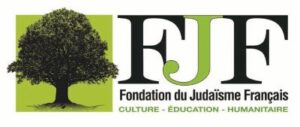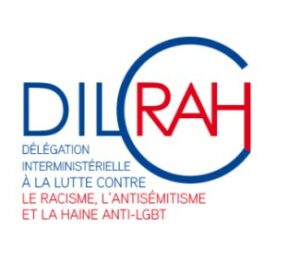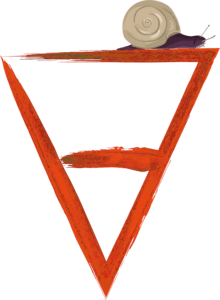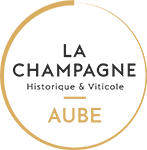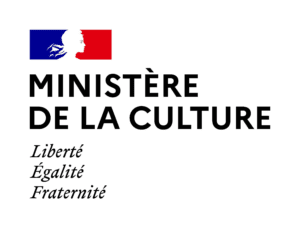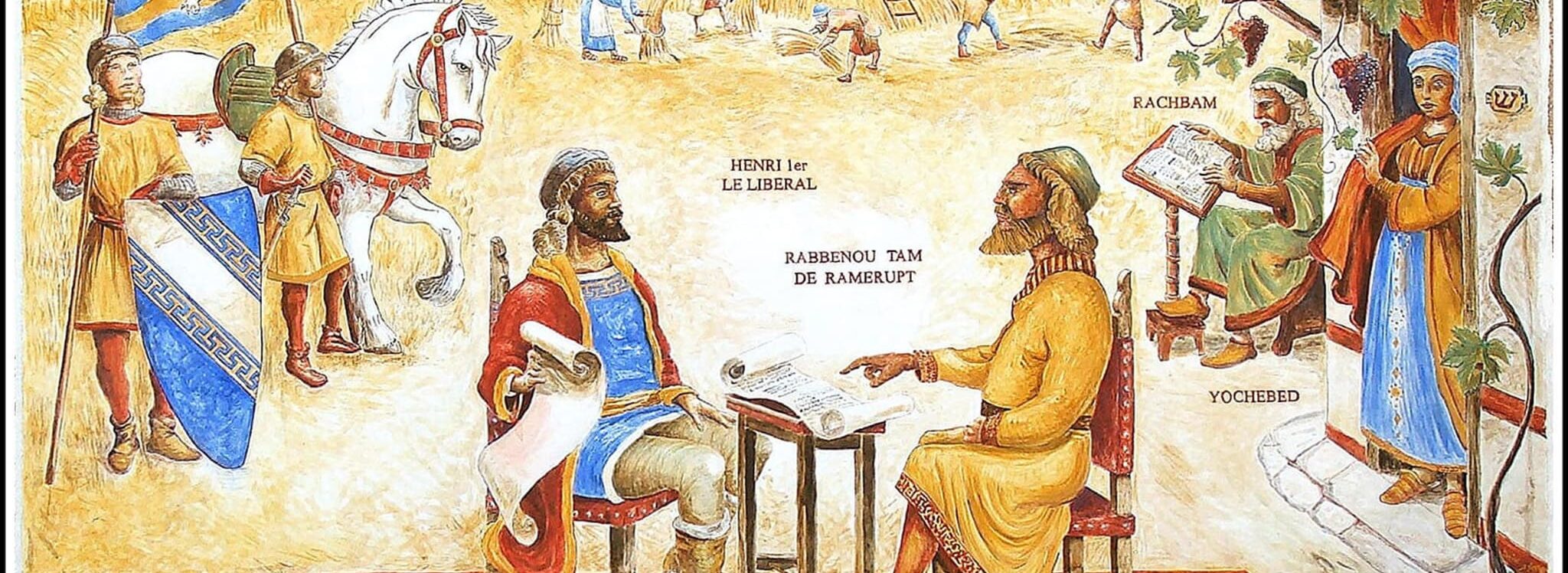
The fresco “Rabbenou Tam and Henry I the Liberal”, created in June 2023, tells the story of and highlights Ramerupt’s medieval Jewish heritage by revealing the figures of Jacob and Samuel, grandsons of Rachi de Troyes, and their mother Yochebed, key historical figures in the Jewish community at the time of the Counts of Champagne in the 12th century, alongside Henry I the Liberal, Count of Champagne.
This fresco is the second in a slowtourism circuit, which will be extended over the next few years with the creation of several frescoes in around twenty other towns and villages in Aube. he written word, the fruit of the intellectual work bequeathed to us by the Sages of Champagne, the disciples of Rashi, forms the main thread of this “Rashi Trail”.
With its original conception, this committed initiative puts the spotlight on rural communities through an unexpected collaborative historical, artistic, cultural, tourist and civic project that brings people together around strong values: sharing, intellectual openness, artistic curiosity, the fight against stereotypes, racism and anti-Semitism.
The Ramerupt fresco measures 4.20m by 3m and is located on the wall of the town’s former school, now a community centre.
contact : bonjour@aube-champagne.com
What elements make up this fresco?
The medieval Jewish heritage of Champagne is largely intangible. Yet the commentaries of Rashi – a leading figure in medieval Jewish thought – and his disciples, the Tossafists (commentators from the School of Rashi), on the Bible and the Talmud are still studied throughout the world. The “Rachi Course”, supported by the Route Médiévale de Rachi en Champagne, is based on these historical figures who lived in local communities that provided fertile ground for meetings between Jewish and Christian communities sharing a common daily life. Their creativity was able to flourish, giving rise to writings that remain benchmarks today.
Hebrew meets Champagne, Judaism meets Champagne
To express these everyday, familiar exchanges, each fresco in the “Rashi Trail” contains a commentary by Rashi in Hebrew, translated into French. These commentaries include a wealth of accounts of local life at the time.
Medieval French was the mother tongue of the Jews of Champagne. They used Hebrew for worship and the study of sacred texts and inserted French words into their commentaries to make them easier to understand for their readers and disciples.
Through their comments, medieval French has crossed borders and centuries to become a major testimony to the beginnings of our language. These words are sometimes the oldest examples of terms transcribed into Old French and appear in many dictionaries.
To illustrate both this transmission of history and language, the commentary chosen for the Ramerupt fresco was proposed by Professor and Rabbi Marc-Alain Ouaknin and focuses on the biblical verse Exodus 26.1 :
“Then you will make the tabernacle, ten curtains made of twisted linen, azure, purple and scarlet, with cherubim embroidered on them”.
Rachi offers the following commentary:
« The cherubs were drawn during weaving, rather than added by needlework. But in the cloth, each of the two sides bore a different figure: a lion on the right side and an eagle on the left (Yoma 72b). This is how we weave the silk belts called “faissis” in our language.
Rashi’s commentary describes embroidery work and introduces the example of weaving belts in the Champagne style, using the Old French word faissis which appears transcribed in Hebrew characters in the Hebrew text.
This comment by Rashi is interpreted by Marc Alain Ouaknin in his book God and the art of angling, Bayard 2017s the definition of a “space of holiness delimited both by the lion, symbol of Judaism, and by the eagle, symbol of the nations”, in other words a meeting between Jews and Christians, as represented here.
The translation of the commentary and the transcription of the word in Old French is an adaptation of several sources by the Scientific Advisory Board, which has made it easier to read and understand.
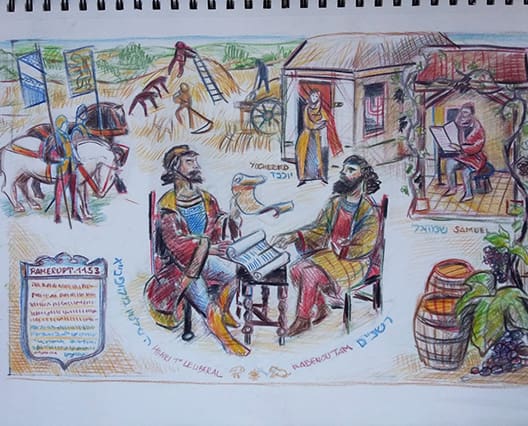
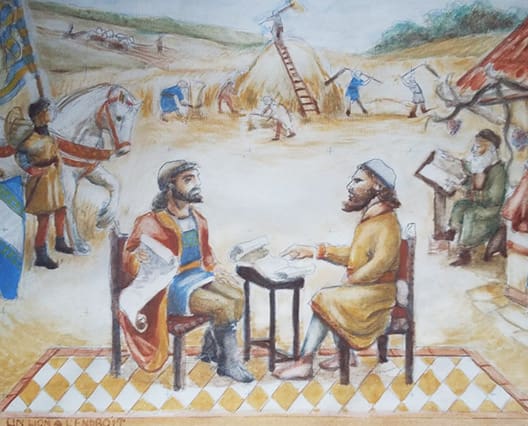
The narrative of the Ramerupt fresco
The villages of Ramerupt and Dampierre are known to Talmudists from all over the world because of the influence of the School of Rashi in the 12th century. urceFrançais From a historical point of view, many accounts of key figures, their activities and their daily lives can be consulted and used in their comments and responsa. This makes these two towns in the former county of Champagne, which were home to medieval Jewish communities, major sites for French Judaism.
Who is Rabbenou Tam from Ramerupt?
This fresco symbolises the meeting of Rabbenou Tam, Rashi’s grandson, with Count Henry I the Liberal in Ramerupt, the centre of the Tossafist School, created in this village by Rashi’s sons-in-law and grandsons to continue his work.
It is inspired by a historical writing, a responsum quoted in an article by Professor Rami Reiner in Entangled Stories, Knowledge, Authority, and Jewish Culture in the Thirteenth Century, by Elisheva Baumgarten, Ruch Mazo Karras, and Katelyn Mesler, chapter 3, page 59 to 72 (English version).
The count certainly never came to Ramerupt, but it is highly likely that Rabbenou Tam held a position at the court of Champagne and that he had regular dealings with the lord of the county. The latter questioned him on three points of interpretation of the Bible, in particular on the question of the death of the biblical character Henoch (Genesis, 5, 24): “And Enoch walked with God; and he was no more, for God took him”.
This information was reported by a disciple of Rabbenu Tam. We also know that Jacob hunted with a falcon, in the manner of the nobles, which attests to a certain prestige.
The Count’s respect for Rabbenou Tam is symbolised here by their meeting on an equal footing. Rabbenu Tam points to the relevant passage in Genesis. His hieratic attitude underlines a moral and intellectual authority recognised by all. Rabbenou Tam was regarded as the representative of the Jewish community well beyond Champagne, as he was the first to organise synods bringing together representatives of all the communities in Northern France in 1170.
On the floor, a paving (or carpet) accentuates the ceremonial aspect of the meeting between the eminent representatives of the two communities, in contrast to the rural setting of the interview.
Professor Pinchas Roth indicates that the oral exchanges between the Count and Rabbenou Tam, and certainly between the members of the family, took place in medieval French, Hebrew being used for study and prayer.
Rabbenou Tam means “our simple Master” in the sense of “humble”, as the patriarch Jacob is characterised in the Bible in the verse of Genesis 25:27. “When the children grew up, Esau became a skilful hunter, a man of the field, while Jacob, a quiet man, lived in a tent”.. Jacob, Rashi’s grandson, was given this nickname because of his prestige, even though he had a strong, imposing and charismatic character.
The fresco depicts a meeting around 1152/53 between the young and pious Count of Champagne Henri I, known as the Liberal, and Rabbenu Tam. The meeting depicted here is improbable, as the figures in the fresco could not possibly have met because of their age differences at the time. However, Rabbenou Tam’s family all lived in Ramerupt and the artist wanted to remind us of this in his composition.
Samuel (Rachbam for Rabbi Chmuel ben Meir, Rabbi Samuel son of Meir), unlike his brother, was a very gentle, calm and discreet character. He is a specialist in biblical exegesis. He is shown here studying behind the two main characters, as if watching over them. Rabbenou Tam is an exegete of the Talmud. Only Samuel had the privilege of studying under his grandfather Rashi. Rabbenou Tam was 5 years old when he died.
The two brothers are well-known landowners. Rabbenou Tam earned a commercial income from his vineyard, while Rachbam raised livestock, which his daughter Marona looked after with Christian staff.
To underline their social status, all the characters wear ceremonial outfits with embroidered fabrics.
Isaac de Dampierre, featured in the Dampierre fresco painted in 2022, was the nephew of Rachbam and Rabbenou Tam of Ramerupt.
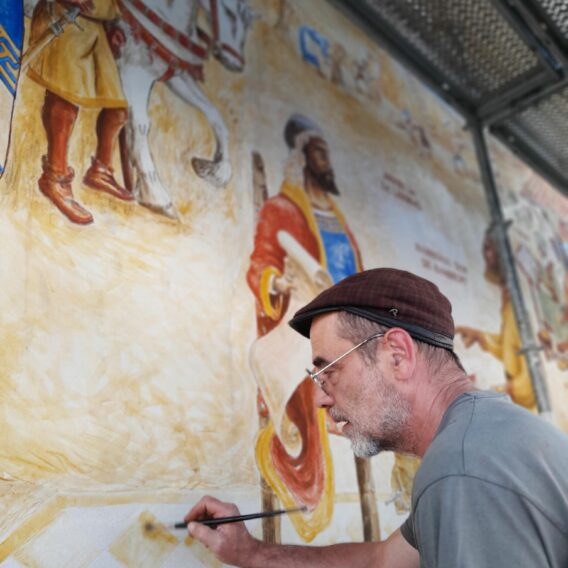
The different planes of the fresco
The Ramerupt region has a long history of farming, with wheat, vines and livestock. C’est la raison pour laquelle il a été choisi de représenter ces symboles forts de l’identité locale sur la fresque. Ploughing, harvesting and threshing (wheat is considered to be one of the “seven fruits of Israel”) are all part of the daily life of the two communities. The ladder leaning against the haystack symbolises the passage from the material world to the metaphysical world (the work of exegesis). It also refers to Jacob’s dream in the Bible, whose name Rabbenu Tam bears.
Bunches of grapes overhang the Torah scrolls, a reminder of Rabbenu Tam’s profession.
In the background, farmers are harvesting.
On the house of Rashi’s daughter, a mezuzah is fixed horizontally. En effet Rabbenou Tam était en désaccord avec Rachi sur sa position qu’il orientait à la verticale (source). Aujourd’hui, en raison de cette divergence d’opinion entre les deux Sages, la mézouza est posée de façon oblique, dans les maisons et lieux de culte juifs. A mezuzah is a ritual object that encloses in a decorative case a small parchment scroll on which a specific passage from the Hebrew Bible is handwritten on parchment.
At the foot of the fresco, beneath the Count and the Tossafist, an eagle and a lion are drawn, echoing Rashi’s commentary and symbolising the fruitful encounter between the Nations and the Jews.
To the left of the main figures, two squires bear the coats of arms of the Count of Champagne and the Lord of Ramerupt. In the Middle Ages, Ramerupt was a seigneury of the county of Champagne. The work features the town’s coat of arms from 1226, “barry azure and gold, surmounted by a lion of the same”.
The origins of the Rachi course
Since 2019, Champagne has been part of the Jewish Heritage Route, a Cultural Itinerary of the Council of Europe, as the cradle of a universally known and recognised intangible heritage. The mission of the Route Médiévale de Rachi en Champagne is to promote the Jewish memory of the department of Aube, a priceless cultural heritage shared by Jews the world over and the historical heritage of a leading region – the former County of Champagne – with national and international influence. However, there are no physical remains of where these communities lived. But the names of their representatives have crossed the centuries and borders and are known worldwide as the “Wise Men of Champagne”. The best-known artists lived in Ramerupt and Dampierre, two communes in the Arcis-Mailly-Ramerupt Communauté de Communes (CCAMR) in northern Aube, which explains the location of the first three frescoes.
The spirit of the Rachi
In the context of intangible heritage, the idea of illustrating the medieval Jewish heritage of Aube through permanent artistic works, free of charge and open to all, is intended to make this part of local history accessible to the general public and, as well as enabling people to discover the history of Aube, to gain a better understanding of Jewish heritage and culture in an informal way, by combining art and historical heritage in an entertaining way.
In this context, this slowtourism route makes sense from a tourist and cultural point of view, as well as from the point of view of promoting the region.
The project is free and open to all, locals and tourists alike, with a focus on forgotten local history. By involving local residents, and in particular schoolchildren, in its creation through a number of workshops, he has worked to gain recognition for this major local heritage and to combat anti-Semitism.
The role of the Scientific Council of the Medieval Route of Rashi in Champagne
The narration of the fresco was proposed by CulturistiQ Laboratoire Culturel and supervised by the Scientific Council of the Route médiévale de Rachi en Champagne, made up of a team of excellent researchers:
- Arnaud Baudin, Deputy Director of the Aube Archives and Heritage, Doctor of Medieval History
- Marc-Alain Ouaknin, Rabbi, writer and professor of philosophy and comparative literature at Bar-Ilan University (Israel)
- Pinchas Roth, Professor of Medieval Jewish History, Talmud Department, Bar Ilan University, specialist in Isaac de Dampierre
- Danièle Sansy, Senior Lecturer in Medieval History at the University of Le Havre Normandie
The team was assisted from time to time by Judith Kogel, Director of Research at the IRHT (Institut de Recherche et d’Histoire des Textes), and Professors Rami Reiner (Ben Gourion University) and Claire Soussen (Boulogne Côte d’Opale University and Director of the Nouvelle Gallia Judaica).
The members of the working group approved the narrative proposed by the Route médiévale de Rachi en Champagne on the theme of the “Memory of the Sages of Champagne”, which was based on a meeting between medieval Champagne symbolism and the symbolism of local Jewish heritage and history. The Scientific Advisory Board’s expertise was particularly sought to ensure that the historical details and symbolism were consistent, and to validate the choice of verse and the translation of the commentary on the fresco.
The fresco at Ramerupt. Art meets history
The model for the Lhuître fresco was created by figurative artist Javier de Sierra Salaberry, born in 1963.
After growing up in Latin America (Uruguay, Argentina) and then Belgium, he moved to France in 1976. He has lived in Creuse since 2021.
Self-taught, he has been making a living as an illustrator since the 90s: school methods, Roman Noir, press drawings, layout artist, computer graphics artist at Agence France-Presse, then at the daily newspaper Le Monde.
At the same time, he developed a personal artistic practice that spanned 30 years: dry pastels, oils, acrylics, murals… with his first solo exhibition in Paris in 1990. Since then he has organised successive workshops in Brussels, Paris, Montreuil, Umbria (Italy) and Creuse.
In 2003, he met master frescoist Jean-Jacques Jolinon at the CIAM in Saint-Savin-sur-Gartempe, where he was introduced to this demanding technique, which he now puts into practice in his studio in Umbria.
In 2021, he crossed paths with Les Passeurs de Fresques and became involved in the Rachi Medieval Route project in Champagne.
Portefolio : https://javipintura.wixsite.com/2021
The fresco was created by the Aube-based association “Les Passeurs de fresques“. The volunteers use this ancient art, which is a painting technique on fresh plaster made from air lime and river sand. The colours used are natural pigments, compatible with lime, simply diluted in water.
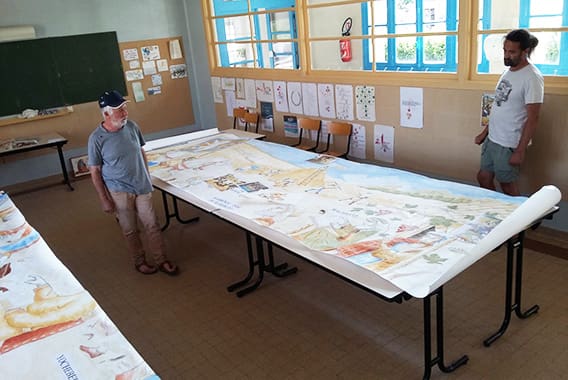
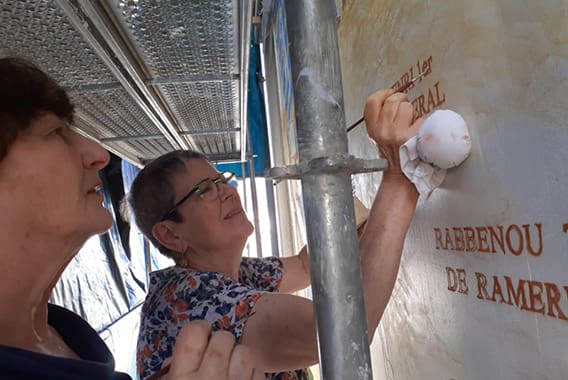
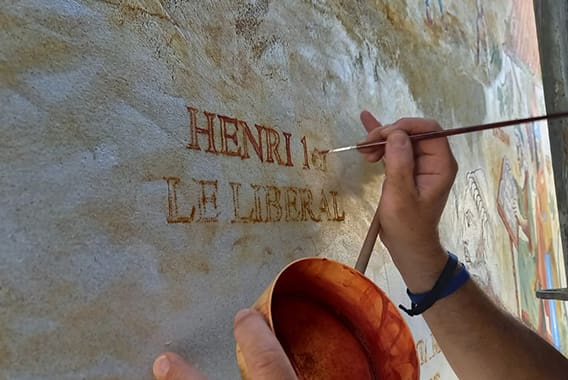
How is a fresco created?
Once the artist has produced a model of the fresco, the fresco artists enlarge it to scale. The plastic tracing paper used for this operation is then placed on the previously prepared wall and used to apply the line and then the desired pigments. An operation on a site such as the Dampierre fresco requires five full days of work on site, not including the preliminary work of enlarging the model and choosing the colours.
For more information: http://lespasseursdefresques.fr/
The Ramerupt fresco project
The fresco project in Ramerupt was led by the Communauté de Communes Arcis Mailly Ramerupt, in conjunction with the project in Dampierre and Lhuître. The commune of Ramerupt has shown a keen interest in enhancing its medieval heritage and has applied to create this third fresco in the Rachi Trail.
Lime is a living material that adapts better to a healthy brick wall. However, the working group felt that the old local school was the ideal location. The choice of a large-scale fresco, visible free of charge from the public highway, was unanimously approved.
Around ten volunteers were needed to create the fresco in situ. The fresco artists were provided with accommodation by the local council for the duration of the project. The works took place between 5 and 9 June 2023. Once two coats of lime had been applied, work began on transferring the design and then colouring the work, using scaffolding erected by the local council.
Project partners
This project, led by the Arcis Mailly Ramerupt Community of Communes, attracted the attention of public and private institutions, which supported the creation of the fresco.
Au travers du concours d’Idées 2021 et 2022 organisé par l’Agence départementale de tourisme de l’Aube et de l’appui du Ministère de la Culture et du Conseil départemental de l’Aube, l’engagement de la Fondation pour la Mémoire de la Shoah, de la Fondation du Judaïsme Français et de la DILCRAH est significatif d’une reconnaissance historique, civique et pédagogique du projet.

